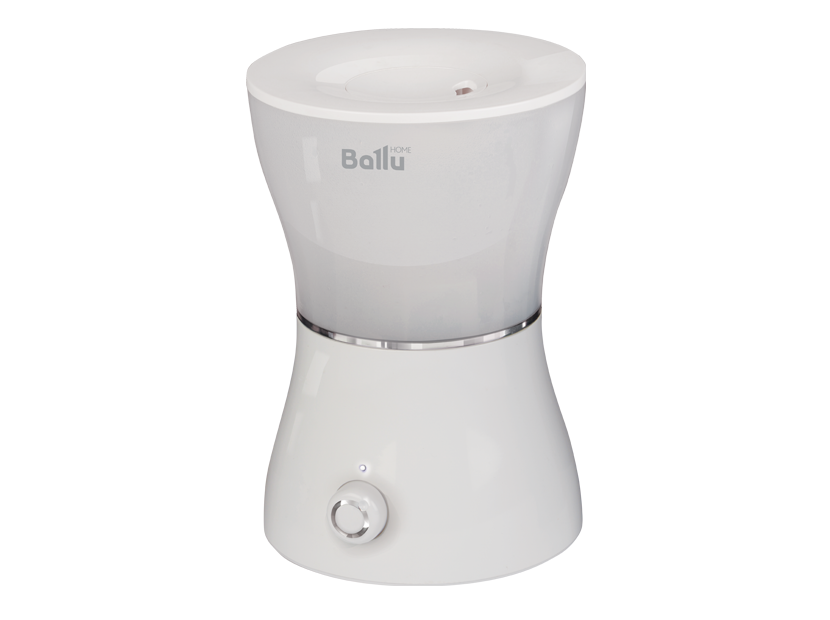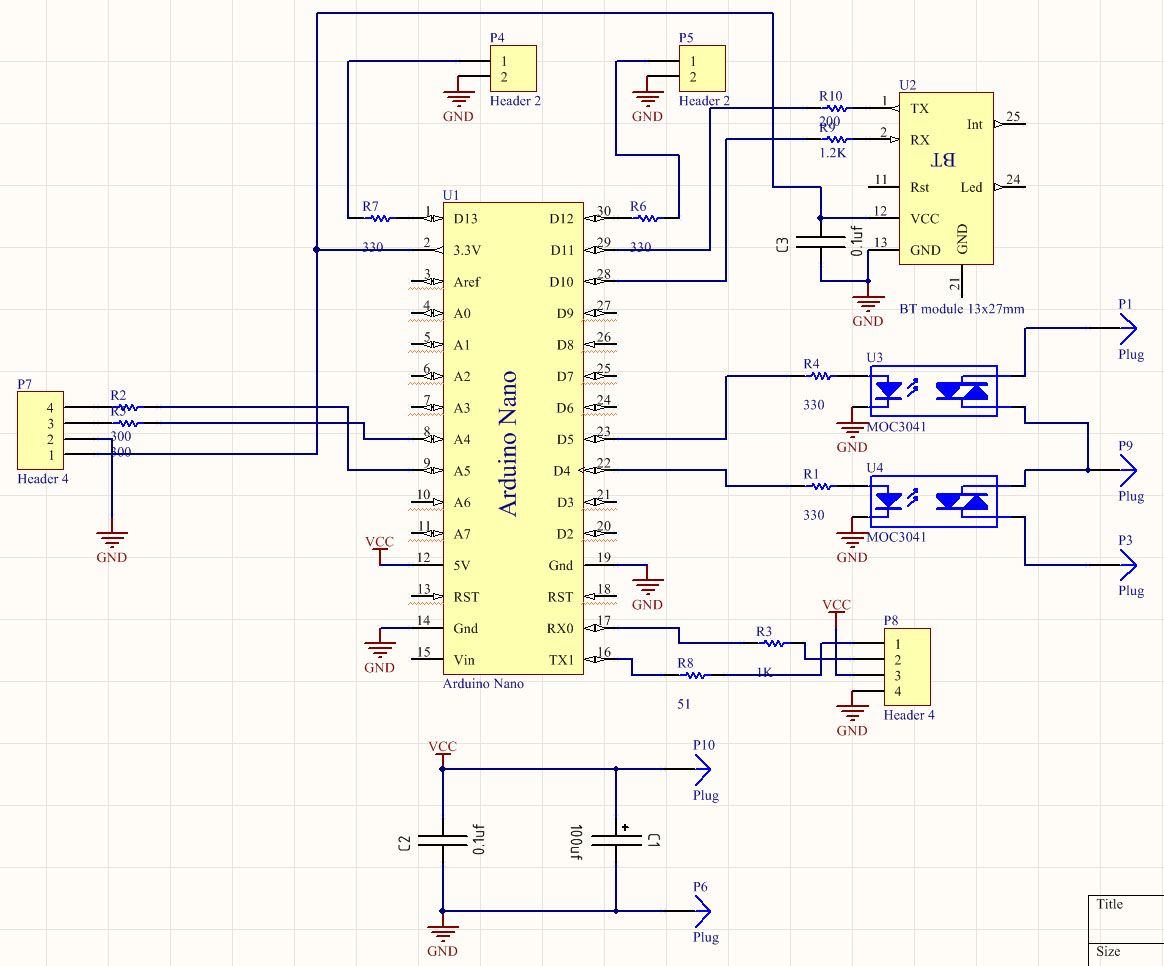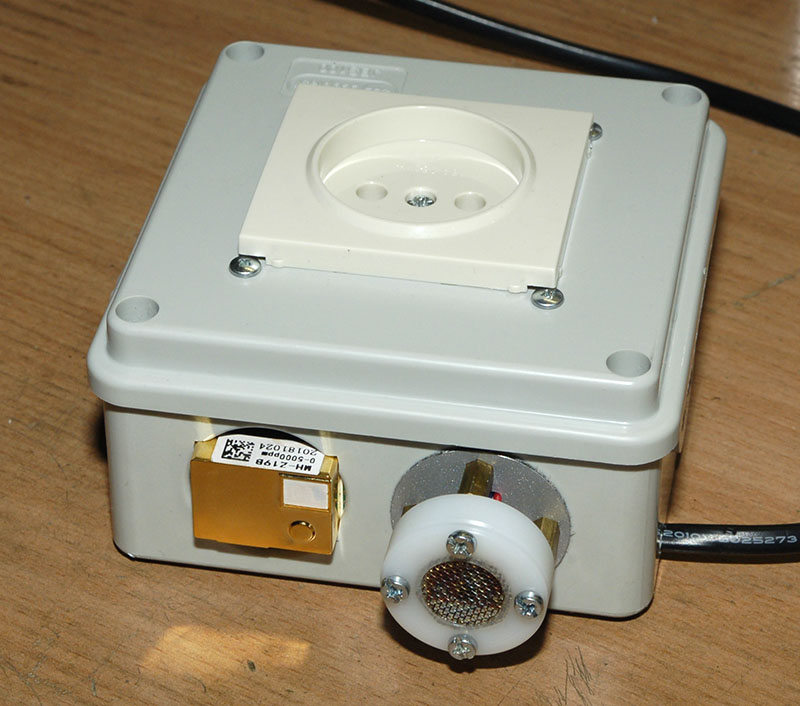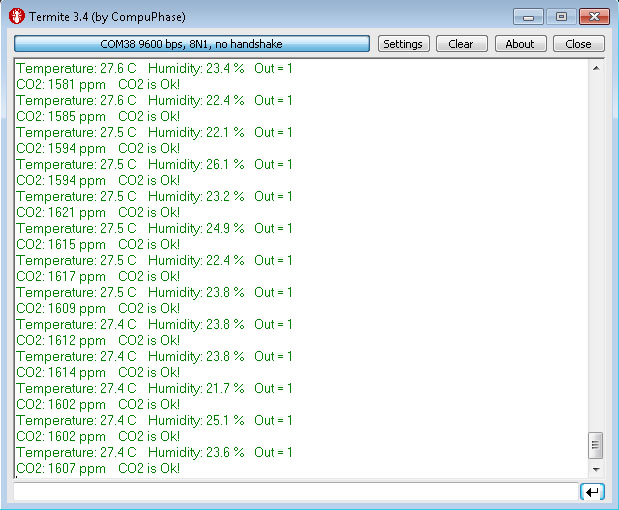Air quality in the house in winter

In winter, indoor air is the worst. Dullness, dryness. The heating works, it is often impossible to air, because you freeze. Especially true when there are small children at home.
How to keep a balance? Is it possible?
In the article I will give figures and calculations. And also its solution to the problem and the device assembled for this. Who cares, I ask under the cat ...
CO2 content
Habré has written many articles about carbon dioxide, about its standards and controls.
Therefore, I will not write much about it. Let me just say that it is necessary to air well to keep the level of CO2 normal. But then another problem arises:
Humidity
Dry indoor air is very bad. People have dry mouth, crusts in the nose. Appears static electricity, clothing cracks and shocks.
Wooden things at home cracking and deteriorating.
At low temperatures, the air can hold very little moisture. And the lower the temperature, the worse.
Here is a sign of the maximum moisture content in the air at different temperatures:

Suppose now the temperature is -20 and relative humidity is 60%.
We look at the plate, we consider. 0.88g / m3 x 0.6 = 0.53g of moisture is contained in 1 m3 of outboard air.
Now we have opened the window and launched this outboard air home. The battery has heated it to 25 degrees and what do we get?
At 25 degrees the humidity of this air will be 0.53 / 22.8 * 100% = 2.3%.
Wow! This is very little! This is because the maximum moisture content in the air at 25 degrees is 22.8 g / m3 (see the tablet).
That is why the air in the room in winter is very dry. And the colder it is on the street, the drier it is.
If you do not take measures, the humidity drops to 7%, the usual moisture meter with a dry and wet thermometer at the same time goes off scale.
And, of course, all the symptoms of dryness appear.
The humidity rate in the room in the winter is 30-40%, in the summer 40-60%. In this case, people feel good. But in order to ensure even a minimum level of humidity of 30%, we need to add to each cubic meter of outdoor air: 22.8 x 0.3 - 0.53 = 6.3 g of water.
And this is a very rough calculation. I did not take into account the expansion of air during heating. In fact, it will be even worse.
Where can I get this missing water? Needs intense hydration! A person exhales about 40g of water per hour, but this is very little.
Ventilation
The man breathes and hopelessly spoils the air. And a lot of air!
This air must be replaced by ventilation. Calculate exactly how we need to air the room.
A man in a calm state exhales 800-900g of carbon dioxide per day. With physical loads - up to 1.5 kg.
We assume that the person in the room is calm and exhales 800 g of CO2 per day or 800/27 = 33.3 g per hour.
The rate of CO2 content in the room is up to 1000ppm.
After 2000ppm it is already very stuffy.
Maintaining a rate of 1000ppm in winter is practically impossible. Why?
Now we calculate:
Air density at 25 degrees 1.18 kg / m3.
Suppose that the fresh air is crystal fresh and the CO2 content in it is 400ppm.
Well, this is the perfect case.
If we take for a maximum of 1000ppm, then we will be able to “exhale” 1000 - 400 = 600ppm
Or 1180 x 600/1000000 = 0.7 g / m3 CO2
If we take 2000ppm for a maximum, then 2000 - 400 = 1600
Or 1180 x 1600/1000000 = 1 , 88g / m3 СО2
Earlier, we considered that a person exhales 33.3g of CO2 per hour. Now calculate how many cubic meters of air a person hopeless ruin in 1 hour:
If the maximum 1000ppm, then 33.3 / 0.7 = 47.6 m3
If the maximum 2000ppm, the 33.3 / 1.88 = 17.7 m3
volume in normal room 20m2 and a height of 2.5m will be 50m3
This means that in order to maintain the level of 1000ppm in a regular room with one person breathing in it, we need to replace almost the entire volume of this room with fresh air every hour! And we need to heat and humidify all this air in order to bring it in condition according to the other norms.
Okay. Suppose batteries are fried to the fullest. We calculate how much water must be evaporated in order to normalize such a volume of air that has returned from the street.
We remember that a person exhales 40g of moisture per hour. Immediately take this into account.
If the maximum is 1000ppm, then 47.6 x 6.3 - 40 = 260 g
If the maximum is 2000ppm, then 17.7 x 6.3 - 40 = 71 g
That is, to raise the humidity with this ventilation, you need to spend 6.24 liters water per day in the first or 1.7 liters in the second case. This is for every breathing person!
2000/1000 = 2 6.24 / 1.7 = 3.67
The dependence is not linear. The fresher the air we want, the more and more water we have to spend. Well, heating too. And this is only to reach the minimum in humidity!
I think too much to evaporate 6.24 liters of water per day for each person. According to this, you have to put up with the stuffiness in the winter. There is nothing you can do.
I am now trying to maintain a CO2 level no higher than 1500ppm and a humidity of 30% at a temperature of 25 degrees. 1500 is a lot, but it used to be even worse. Let's see what happens.
I use a humidifier like this: His

performance is 300ml / h. That is, for a couple of breathing people it will be enough.
The humidifier is charged with distilled water. If you fill the usual, the salt from the water is deposited everywhere in the form of white bloom. This is not very good.
Water is sold here in these 19l bottles.

Count yourself how many such bottles you need per month for your family in the first and second cases of ventilation.
Well, now we need to automate the process.
For this, I collected a simple device.
Here it is:

And here is its scheme: Clickable I used the CO2 CO2 sensor MH-Z19, the temperature / humidity sensor HTU21D. The temperature / humidity sensor is outside the box, so that the heating of the box has less effect on the readings. Manages this all Arduino Nano, communication with the outside world through the Bluetooth module. My device has 2 control channels. I use only 1 for now to turn on the humidifier. On the second you can connect, for example automatic ventilation or heater. Relay 220V included through the optical triac. As a case, I took the distribution box. Cheap, angry and a lot of holes for sensors and indicators.



I can set the device to “plug” the parameters in which it is necessary to turn on and off external devices. The device can transfer data via Bluetooth.

And there are indicators on the front panel:
“Perdahtung” on the left. Or indicator
Right low humidity indicator. Lights when the humidifier is turned on.
I don't have an automatic ventilator. So as soon as the red Achtung lights up, it's time to
That's all. Write comments.
